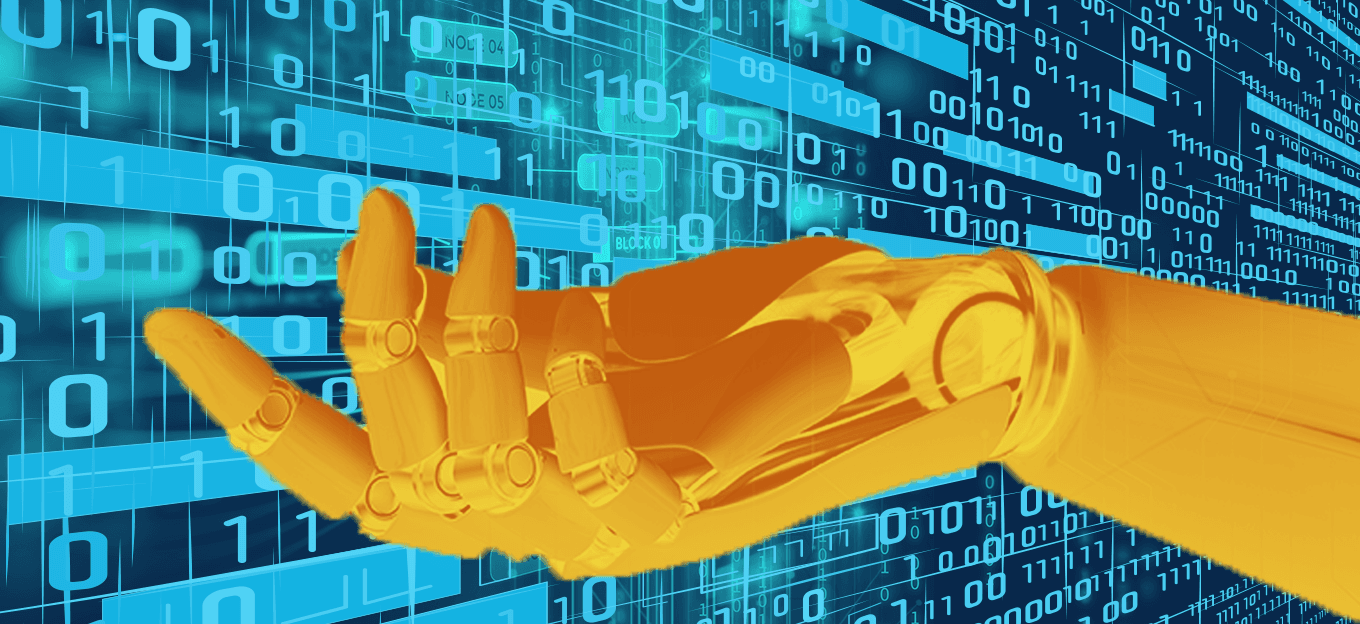How will AI Accelerate After COVID-19?
How will AI Accelerate After COVID-19?
- Last Updated: December 2, 2024
Guest Writer
- Last Updated: December 2, 2024



Artificial Intelligence (AI) has been touted as one of the leading technologies of the 21st century. It is an important part of modern organizations that intelligently integrate data, analyze critical information, and utilize the derived insights for making better decisions.
AI has been transforming every facet of modern businesses while simultaneously bringing great convenience for common people through its applications. Both AI and automation have been playing significant roles in the modern wave of digitalization.
The novel coronavirus has further highlighted the significance of digital readiness for businesses. Hence, the already healthy pace of AI and automation adoption is expected to receive an exponential push as companies have started to look for technologies that make them future proof and digital-ready.
Artificial intelligence has been integral in tracking COVID spread and in developing a vaccine. But what's next for this technology - will we continue to see widespread adoption in the new normal?
In 2019, a Gartner study revealed that Artificial Intelligence grew 270 percent from 2015 to 2019. Another study by Fortune Business Insights claimed that AI and automation are going to be extremely crucial for the healthcare industry amidst the pandemic. Further, it revealed that the global AI market is expected to grow at a Compound Annual Growth Rate (CAGR) of about 33.2 percent from 2019 to 2027, reaching a value of $267 billion in 2027 from $27.23 billion in 2019.
From tracking the COVID-19 symptoms via smart wearable devices to mining and deriving the virus strain to help build better test kits, AI has been a true technology enabler for the healthcare industry during the pandemic. Even otherwise, AI and automation have been a great support to businesses across industries in these testing times.
We have been getting some good news from various parts of the world about a few vaccines. Some of them are in the final phase of testing while others are almost done with all the testing. This gives great hope to the entire world which has been devastated by this deadly infectious virus. While we hope to see the post-COVID era soon, let’s try to understand some AI and automation trends that will continue empowering businesses in the after COVID world.
New Opportunities
With current AI and Machine Learning (ML) capabilities, businesses can sift through useful data more efficiently than ever before. Not only text or numbers but diverse inputs including spoken, written, or image inputs can be analyzed easily today. This empowers organizations to find business-critical information from more varied data sets.
It not only reduces business expenses but also creates new trade opportunities. We have seen AI algorithms quickly sift through enormous amounts of information during the COVID-19 pandemic, helping to identify similar diseases and their potential cures for speeding up the coronavirus research work.
Machine Learning advancements are expected to help businesses create new revenue streams by enabling them to better monetize their data. Having access to valuable data points helps in numerous ways. For example, information related to the efficacy of a certain drug on people in a particular age group is highly insightful to pharmaceutical companies and drug researchers.
Emerging AI and ML data processing algorithms and protocols will be more insightful for businesses and will make way for fresh, profitable market opportunities in the post-covid-19 era.
Future-Proof and Robust Data Supply Chains
AI and automation are highly effective tools for making your data supply chains future-proof and anti-fragile. Data connectors, statistical models, Machine Learning, data-driven automation, visual storyboards, etcetera are some constructive methods to attain this goal. Even though, data supply chains are complex, it is still possible to make them robust and non-obsolete by incorporating pensive processing at both the point of creation as well as consumption of actionable insights.
The process starts with collecting large volumes of diverse data being generated from external as well as internal sources. This accrued data can be kept at a central place for its exploration, cleansing, transformation, augmentation, and enrichment. Post this, the data is modeled for its utilization for a defined purpose. After this, you can prepare heuristic and statistical models of the data. Various AI and ML algorithms can be used for different scenarios. These data models are then tuned and kept in an environment for their regular inspection and monitoring. The learning outcomes from the tuned data sets finally leads to the result visualization. Here, you can demonstrate the cause-effect relationships to underline the most impactful areas. This eventually helps you solve a set of problems or discover new business opportunities.
This is another promising aspect of AI and automation for the future. The right data valuation approach can help you detect limitless business opportunities like customer centricity, competitive edge, operational efficiency, strategic partnerships, fresh revenue streams, and improved profitability.
Reconciliation of Emotions with Actualities
Today you can generate money from the value derived from data. However, it wasn’t possible in the past. It was extremely difficult to sift through large volumes of data to identify relationships. There were only a few rudimentary tools such as correlation and regression. At present, you have access to advanced analytical tools that help you understand the essence of the extracted data. These tools help you transform your data into stories you can both read and tell. You can either validate your emotions or disagree with them on the basis of data. Business leaders can now get faster insights that help them support or invalidate their instincts.
Deriving meaning out of your own organizational data is extremely beneficial for your business. The real power of AI lies in helping you tell a story with data and demonstrate actual results. Hence, this capability of AI is one to look forward to in the post-Covid-19 world.
Monetization of Multimedia
AI has been popular for enabling people to create algorithms, generate large amounts of written or numerical data, and deriving sense out of that data. However, in the modern world, voices or images account for a significant volume of data that wasn’t easy to manage and process until contemporary AI developments. Today, there are limitless applications of auditory and visual inputs. Finance and retail industries are amongst those who have already initialized the adoption of this technology for reducing expenses, increasing sales, and improving customer engagements.
For example, on analyzing that its customers have to walk farther to access a popular product, a retail store can shift the product closer to the entrance and see if the sales increase. This is possible through an AI-backed analysis of the visual data recorded by the store.
The technology has huge potential in other industries as well. The education industry, while evaluating the student engagement of their digital content, is tracking the retina movements of the students. In radiology, people have started to study videos and digital images to get deeper insights. MRIs are now capable of tracking brain tumors more effectively. They can detect their growth or contraction while also determining whether they are getting lighter or darker in terms of regions. Such AI-driven technology is of immense support to present-day doctors who are able to discern and treat cancer more rapidly.
Processing visual data of the human eye can help detect if someone is intoxicated, fatigued, or has some kind of ailment. Voice ML is also gaining popularity in modern times. The latest voice recognition tools are capable of detecting inflection points which can even help predict if a person is suicidal.
Today, it is also possible to integrate numerous processes across different cloud environments. This has made data analytics and processing more accessible as well as outsourceable than ever before. It also eliminates the necessity to procure and maintain expensive hardware machines and servers.
Scaling Statistical Models for Actionable Prototypes
The modern, AI-backed neural networks have introduced sophisticated simulation exercises that connect our decision-making process with the facts to help us make better, fact-based decisions. Until now, we have been looking at data models such as customer behaviors, demographics, and others separately. What we fail to realize with this perception is that no two customers are the same. Now that we are able to connect the data models, this fact becomes even more obvious.
AI applications allow us to view modern trends from a factual point of view. The collective perception has promising results for organizations across industries. Healthcare, for example, is incorporating this practice to determine whether a patient has a probability of suffering from a particular disorder or not. This technology also allows healthcare professionals to deduce highly personalized treatment protocols for a person on the basis of his likes, dislikes, allergies, etcetera.
Virtual Customer Experiences and Better Security
The lockdowns and restrictions across the world have certainly fast-tracked the digital economy and online markets. There are certain things we, as consumers, are now accustomed to, particularly because of the pandemic. And hence, even after the pandemic is gone, we are expected to consume those services in a similar manner. After all, it brings services to our doorsteps.
AI and other technologies are going to play an important role in helping businesses deliver more value and better customer experiences. The involvement of technologies like Virtual Reality (VR) and Augmented Reality (AR) to improve the overall shopping experiences of increasing online shoppers is going to be huge in the future.
Customers’ digital avatars can be created by utilizing AR, VR, and AI algorithms. The customers can try out accessories and clothes they wish to purchase online. Also, people interested in purchasing properties can have 3D tours of the properties prior to purchasing. Although it won’t exactly replicate the physical experience, it could be counted close and more convenient and safe.
Artificial Intelligence and automation are going to serve an equally important role on the security front. These technologies are capable of serving places like shopping malls, airports, and other such public places where there are thousands of individuals at the same time. Intelligent AI-powered systems and automation will make it more effective and easier to screen people compared to manual surveillance.
The Bottom Line
The ability to constantly learn and adapt to changing circumstances is what separates AI from other technologies. It has lead to innovative applications like intelligent data processing, face and voice recognition, etcetera. One can say AI will have a better impact on businesses in the supply chain and retail industries, but its applications in other industries are promising as well.
With the pace at which various organizations have adopted innovative, emerging technologies such as AI and ML during the pandemic, it is obvious that the post-Covid-19 era will be even more advanced and open to sophisticated technologies and their applications.
AI is not only capable of delivering a smarter, faster, safer, and more accountable future but also promises to fill the space between data-backed decisions and human intuition. This will enable businesses and their consumers to transact with the greatest trust.
AI is expected to be an inseparable part of the post-pandemic world, empowering businesses to attain unimaginable growth and efficiency. Hence, it would be critical for businesses and professionals to revisit their business strategies to accommodate AI and its applications for being relevant in the post-covid world.
The Most Comprehensive IoT Newsletter for Enterprises
Showcasing the highest-quality content, resources, news, and insights from the world of the Internet of Things. Subscribe to remain informed and up-to-date.
New Podcast Episode

IoT and AI in 2026
Related Articles





